Prep: 20 mins
Cook: 60 mins
Chill Time: 4 hrs
Total: 5 hrs 20 mins
Servings: 8 to 10 servings
Yield: 1 cheesecake
This cheesecake is a stunningly velvet crustless treat. It’s unlike any cheesecake you’ve had before, but at the same time it’s rich and familiarly creamy. This seemingly «burnt» cheesecake—inspired by the ones found in Spain’s Basque region—bakes at a high temperature for an extended amount of time to achieve its signature intense caramel crust. The outside layer forms a protective barrier between the smooth high-fat batter which sets beautifully once thoroughly cooled.
Be sure to use regular (now low fat) cream cheese and 36 to 40 percent heavy cream to incorporate as much fat as possible and ensure that your cheesecake’s center stays creamy during the baking process. When folding the parchment paper into the base of your springform pan, don’t be afraid to fold the paper as needed for a better fit.
Ingredients
-
32 ounces cream cheese, softened
-
2 cups granulated sugar
-
6 eggs, room temperature
-
2 cups heavy whipping cream
-
1 teaspoon vanilla extract
-
3 tablespoons al-purpose flour, sifted
Steps to Make It
-
Gather the ingredients. Preheat the oven to 425 F.
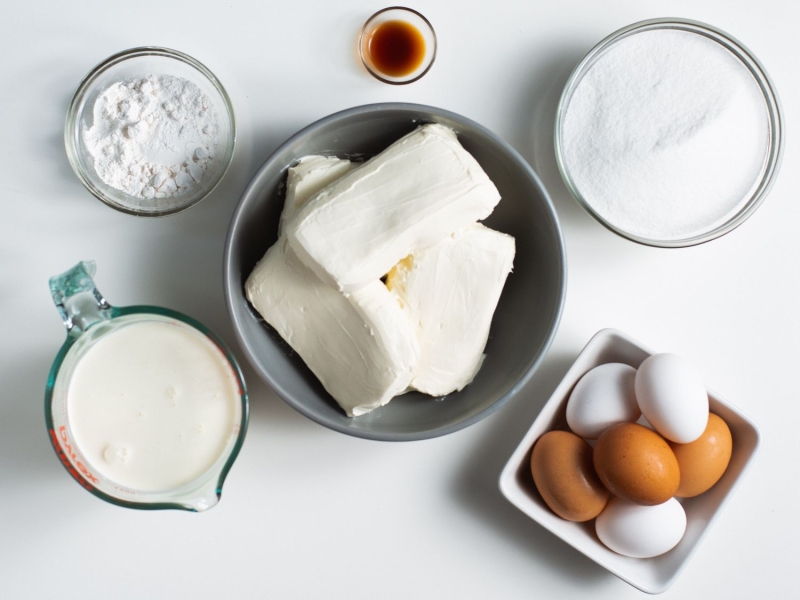
-
Line a 10-inch round springform cake pan with parchment paper. Pleat 2 large (12×16-inch) sheets of parchment paper to fit snugly against the sides of the baking pan.
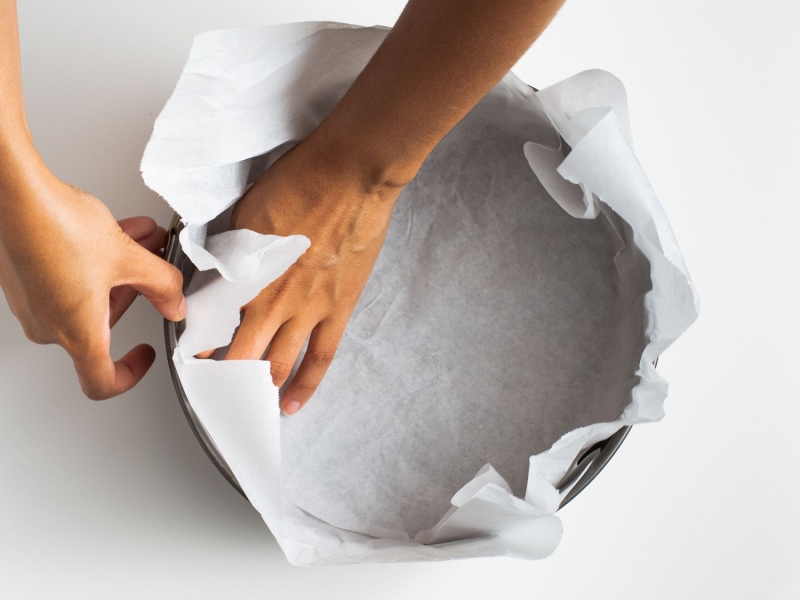
-
Add softened cream cheese to an electric mixer fitted with a whisk attachment. Whip cream cheese on medium speed for 4 minutes or until smooth and light.
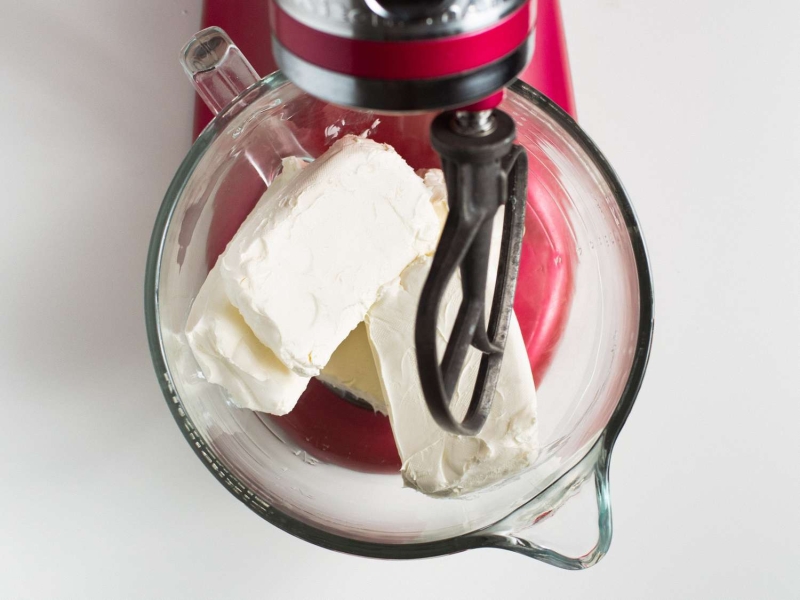
-
Add sugar and mix until fully incorporated.
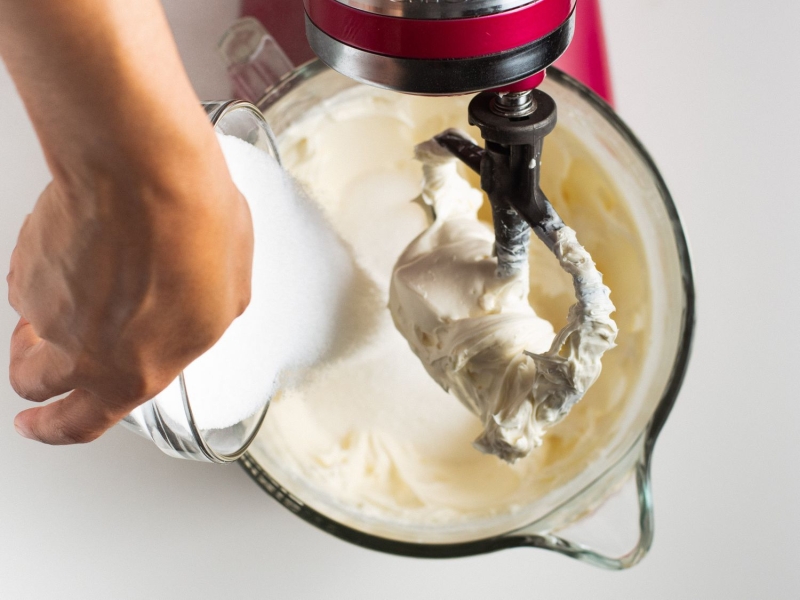
-
Mix in one egg at a time.
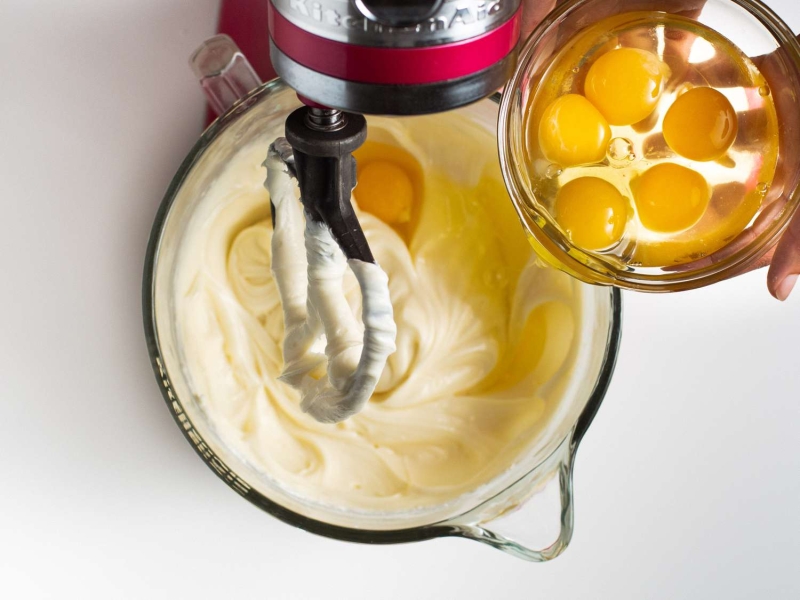
-
Reduce speed to low and add heavy whipping cream and vanilla extract.
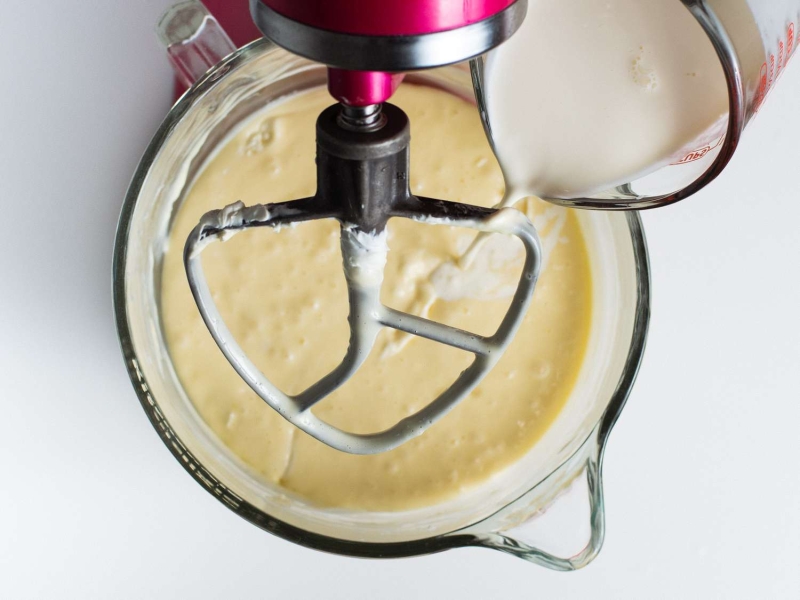
-
Add the all-purpose flour.
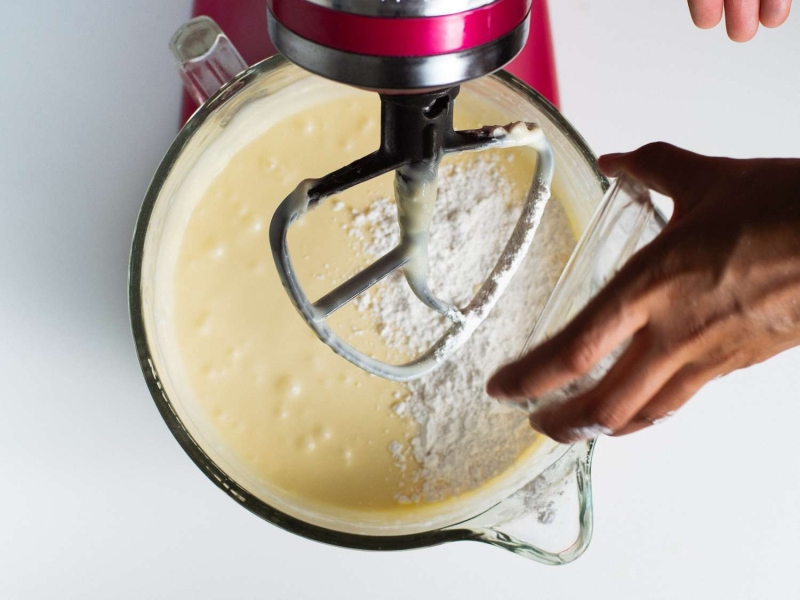
-
Pour the cheesecake mixture into the prepared pan.
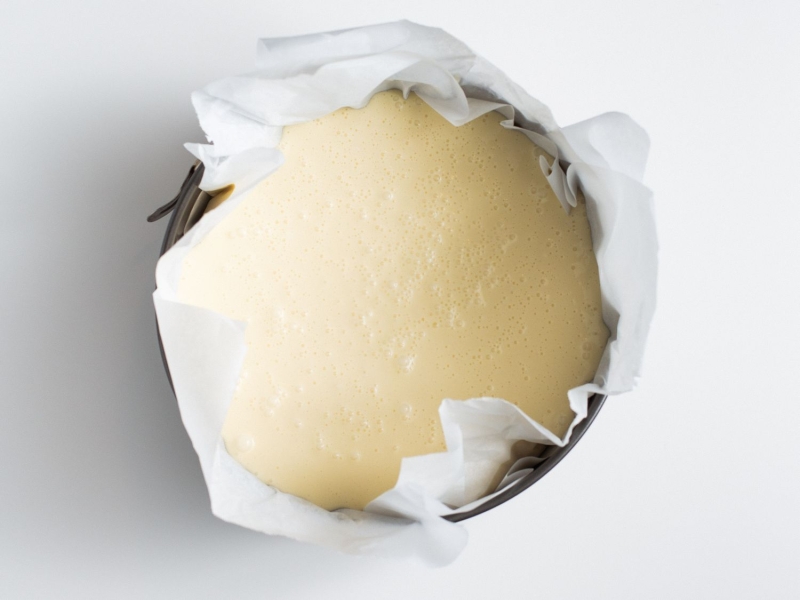
-
Bake for 50 to 60 minutes or until the crust has significantly darkened into the color to burnt umber. The crust of the cake will slightly rise and gradually became darker the longer it bakes.
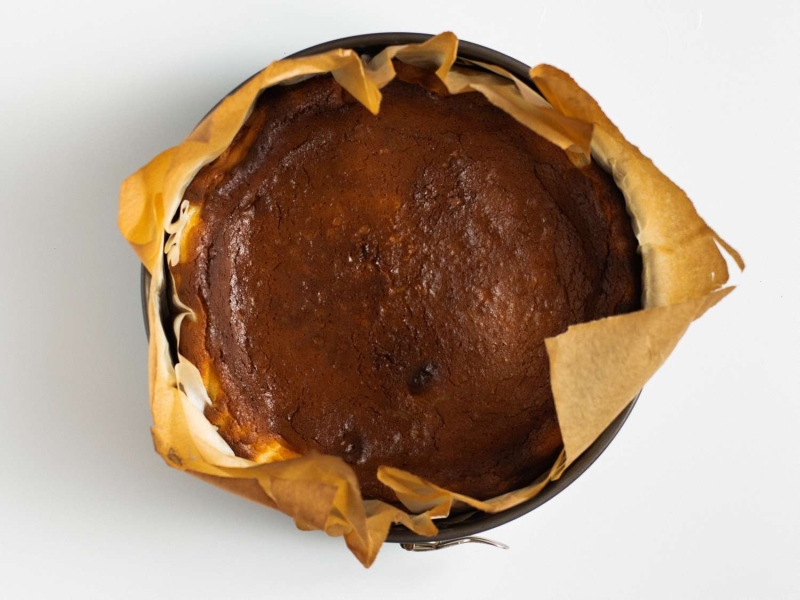
-
The cheesecake should have a slight jiggle when it’s removed from the oven. Allow it to cool to room temperature and refrigerate for at least 4 hours before serving. Remove the cheesecake from your springform pan and fold back the pleated parchment paper to cut slices.
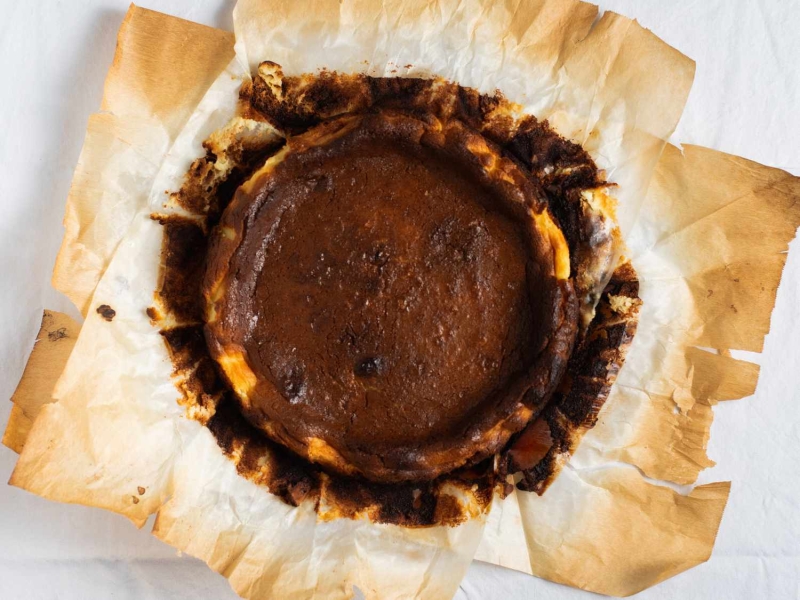
Tips
- For best results, have all of your ingredients at room temperature before starting.
- If you don’t have a stand mixer you can use an electric hand mixer. Make sure to beat the cream cheese until creamy and fluffy and thoroughly combine the mixture.
- Store the leftovers in an airtight container in the refrigerator for up to 3 days.
Why Is It Called Basque Cheesecake?
Burnt Basque cheesecake is named after its region of origin. A relatively new invention, the dessert was first served at La Viña, a restaurant in San Sebastián, Spain. It can now be found in bakeries around the world.
Why Did My Basque Cheesecake Crack?
Cheesecakes frequently crack when they are over-cooked, so keep a close eye on your homemade dessert in the last several minutes of baking. It should still have a slight wobble in the middle. It’s worth noting that one of the nice things about Basque cheesecake is their rustic look, so don’t fret too much about a crack or two.
| Nutrition Facts | |
|---|---|
| Servings: 8 to 10 | |
| Amount per serving | |
| Calories | 687 |
| % Daily Value* | |
| Total Fat 51g | 66% |
| Saturated Fat 30g | 151% |
| Cholesterol 257mg | 86% |
| Sodium 341mg | 15% |
| Total Carbohydrate 48g | 18% |
| Dietary Fiber 0g | 0% |
| Total Sugars 45g | |
| Protein 11g | |
| Vitamin C 0mg | 1% |
| Calcium 137mg | 11% |
| Iron 1mg | 4% |
| Potassium 210mg | 4% |
| *The % Daily Value (DV) tells you how much a nutrient in a food serving contributes to a daily diet. 2,000 calories a day is used for general nutrition advice. | |


